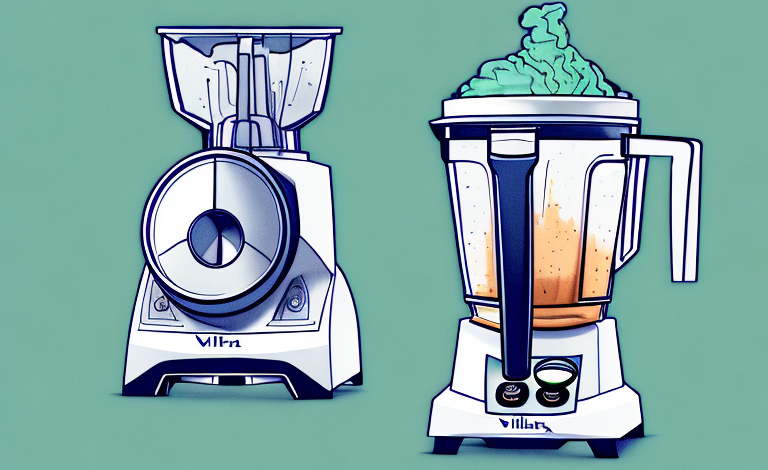With the increasing use of biometric authentication technology in our daily lives, it is important to understand why certain methods may not always be the most secure. In this article, we will explore the reasons why fingerprint authentication may be less secure than PIN authentication, and provide an overview of the science and limitations of biometric authentication technology.
Understanding Biometric Authentication
Biometric authentication relies on unique physical characteristics of an individual to verify identity. This includes methods such as fingerprint scanning, facial recognition, and iris scanning. The idea behind biometrics is that unlike passwords or PINs, which can be forgotten or stolen, an individual’s physical traits cannot be replicated. However, there are limitations and vulnerabilities that come with biometric authentication, particularly with fingerprint scanning methods.
One limitation of biometric authentication is that it requires specialized hardware and software to capture and analyze the physical traits. This can be costly and may not be feasible for all organizations or individuals. Additionally, there are concerns about privacy and security when it comes to storing and using biometric data.
Despite these challenges, biometric authentication is becoming increasingly popular in various industries, including finance, healthcare, and government. It offers a higher level of security and convenience compared to traditional authentication methods. As technology continues to advance, it is likely that we will see even more innovative and secure biometric authentication methods in the future.
The Science Behind Fingerprint Authentication
Fingerprint authentication relies on the uniqueness and complexity of an individual’s fingerprints. Each person has a distinctive pattern of ridges and valleys on their fingertips that can be scanned and matched against a stored database of prints. The technology works by measuring and analyzing the minutiae points on a fingerprint, such as ridge endings, bifurcations, and dots. While this method can be effective in identifying an individual, it is not without limitations.
One limitation of fingerprint authentication is that it can be affected by factors such as skin conditions, injuries, and aging. For example, a person with a cut or burn on their fingertip may not be able to use fingerprint authentication until the injury has healed. Additionally, as a person ages, their fingerprints may become less distinct and harder to read accurately. Despite these limitations, fingerprint authentication remains a popular and widely used method of biometric identification.
Limitations of Fingerprint Scanners
One of the main limitations of fingerprint scanners is that they are only as secure as the technology used to store and match the prints. If the system is not secure, or if the database is improperly stored, hackers can steal and replicate the prints. Additionally, errors and false positives can occur if the scanner does not properly recognize the unique features of each fingerprint. These errors can make it difficult for some individuals, particularly those with scars, calluses, or dry skin, to use the technology.
Another limitation of fingerprint scanners is that they can be less effective in identifying individuals who have undergone significant changes to their fingerprints, such as those who have had surgery or burns. In these cases, the scanner may not be able to properly match the new fingerprint to the original one on file. Furthermore, fingerprint scanners may not be suitable for certain environments, such as those with high levels of dust or moisture, as this can affect the accuracy of the scanner. As with any technology, it is important to consider the limitations and potential drawbacks before implementing it in a security system.
How PINs Provide a Higher Level of Security
PIN authentication, on the other hand, is based on a secret code that only the individual should know. This provides an added layer of security, as the code cannot be replicated or stolen. Additionally, PINs can be changed regularly, making it more difficult for hackers to gain access to sensitive information.
Furthermore, PINs are often used in conjunction with other security measures, such as biometric authentication or two-factor authentication. This multi-factor authentication approach provides an even higher level of security, as it requires multiple forms of identification to access sensitive information or systems. For example, a user may need to enter their PIN and provide a fingerprint scan to access their bank account online. This makes it much more difficult for unauthorized individuals to gain access to sensitive information, as they would need to bypass multiple layers of security.
Vulnerabilities of Fingerprint Authentication
While fingerprint authentication technology has become more sophisticated in recent years, there are still vulnerabilities that make it less secure than PIN authentication. For example, hackers have been known to use fake fingerprints made of materials such as clay, gelatin, or silicone to fool scanners.
In addition to fake fingerprints, there are other vulnerabilities associated with fingerprint authentication. For instance, fingerprints can be lifted from surfaces and used to gain unauthorized access. Moreover, if a person’s fingerprint data is stored in an unencrypted format, it can be easily stolen and used for malicious purposes. Therefore, it is important to use fingerprint authentication in conjunction with other security measures to ensure maximum protection.
Risks of Using Fingerprint Technology for Security Purposes
There are also risks associated with the use of biometric data for security purposes. If a hacker gains access to a database of fingerprint or facial recognition scans, they could use this data for nefarious purposes such as identity theft, fraud, or blackmail.
In addition, there are concerns about the accuracy and reliability of fingerprint technology. Factors such as dirt, sweat, or injuries to the fingers can affect the accuracy of the scans, leading to false positives or false negatives. This can result in legitimate users being denied access or unauthorized users being granted access, compromising the security of the system.
Comparison of Biometric and PIN Authentications
When comparing biometric and PIN authentication methods, it is important to consider the specific use case and level of security required. For example, fingerprint scanning may be appropriate for unlocking a personal device, but it may not be secure enough for accessing sensitive financial or medical information.
On the other hand, PIN authentication requires the user to remember a code or password, which can be easily forgotten or guessed by someone else. However, it can provide a higher level of security if the user chooses a strong and unique code. Additionally, biometric authentication methods such as facial recognition or iris scanning may be more accurate and secure than fingerprint scanning, but they may also require more advanced technology and be more expensive to implement.
Can Hackers Steal Your Fingerprints?
Yes, hackers can steal your fingerprints. If a hacker gains access to a database of prints or finds a way to replicate your prints, they could use this information to gain access to sensitive information or commit identity theft.
It is important to note that not all fingerprint scanners are created equal. Some scanners use more advanced technology, such as live finger detection or multi-factor authentication, to prevent hackers from stealing your prints. It is important to research and choose a reputable scanner to ensure the highest level of security for your biometric data.
Security Risks and Privacy Concerns of Biometric Authentication
There are also potential privacy concerns associated with the use of biometric authentication technology. In addition to the risk of data breaches, individuals may be uncomfortable with the idea of their physical traits being stored and analyzed by third parties without their consent.
Furthermore, there is a risk of biometric data being used for discriminatory purposes. For example, facial recognition technology has been shown to have higher error rates for people with darker skin tones, leading to potential bias in identification and access control. This highlights the importance of ensuring that biometric authentication technology is developed and implemented in an ethical and responsible manner.
Alternatives to Fingerprint Scanning for Secure Authentication
There are alternatives to fingerprint scanning for secure authentication, such as face recognition, voice recognition, and multi-factor authentication methods that combine biometric and PIN authentication.
Face recognition technology uses a person’s facial features to verify their identity. It works by capturing an image of the person’s face and comparing it to a stored image of their face. Voice recognition technology, on the other hand, uses a person’s unique voice patterns to verify their identity. It works by analyzing the person’s voice and comparing it to a stored voiceprint. Multi-factor authentication methods combine two or more authentication factors, such as biometric and PIN authentication, to provide an extra layer of security. These methods are becoming increasingly popular in industries where security is of utmost importance, such as banking and healthcare.
Future Developments in Biometric Authentication Technology
As biometric authentication technology continues to develop, it is likely that new methods and approaches will emerge that address the limitations and vulnerabilities of current methods.
One area of potential development is in the use of multi-modal biometrics, which combines multiple biometric factors for more accurate and secure authentication. For example, a system could use both facial recognition and voice recognition to verify a user’s identity, making it more difficult for imposters to bypass the system.
Another area of potential development is in the use of biometric encryption, which uses biometric data to encrypt sensitive information. This approach could provide an additional layer of security, as the encrypted data would only be accessible to individuals with the correct biometric credentials.
Best Practices for Securing Personal Data
Regardless of the authentication method used, there are best practices that individuals and companies can follow to ensure the security of personal data. This includes regularly updating passwords and PINs, using two-factor authentication wherever possible, and being cautious of phishing scams and fraudulent emails.
Another important best practice for securing personal data is to limit the amount of personal information shared online. This includes being cautious of what information is shared on social media platforms and avoiding public Wi-Fi networks when accessing sensitive information.
In addition, it is important to regularly back up important data and store it in a secure location. This can help prevent data loss in the event of a security breach or system failure. It is also recommended to use encryption software to protect sensitive data, such as financial information or medical records.
Choosing the Right Authentication Method: Pros and Cons
Ultimately, the choice of authentication method should depend on the specific use case and level of security required. While biometric authentication may provide convenience and unique security features, it is important to consider the limitations and vulnerabilities associated with the method before fully embracing the technology.
In conclusion, while fingerprint authentication technology has its benefits, it may not always be the most secure method for sensitive information. As technology continues to advance, it is important to weigh the pros and cons of various authentication methods and make informed decisions to protect our personal data.
One alternative authentication method that is gaining popularity is multi-factor authentication (MFA). MFA requires users to provide two or more forms of identification before granting access to a system or application. This can include something the user knows (such as a password), something the user has (such as a security token), or something the user is (such as a fingerprint or facial recognition). While MFA may be more cumbersome for users, it provides an additional layer of security that can help prevent unauthorized access to sensitive information.



